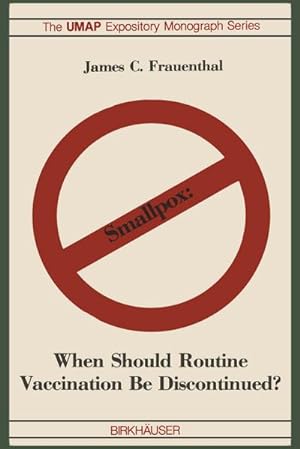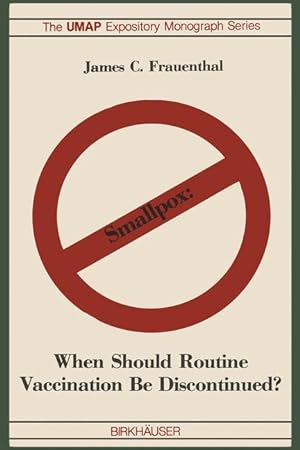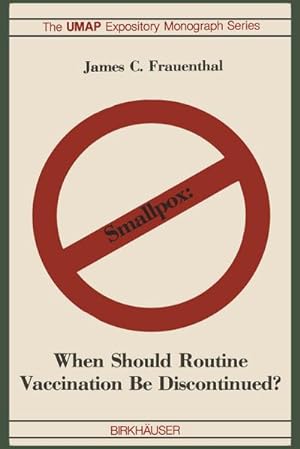Smallpox When Routine Vaccination (8 results)
FeedbackSearch filters
Product Type
- All Product Types
- Books (8)
- Magazines & Periodicals (No further results match this refinement)
- Comics (No further results match this refinement)
- Sheet Music (No further results match this refinement)
- Art, Prints & Posters (No further results match this refinement)
- Photographs (No further results match this refinement)
- Maps (No further results match this refinement)
- Manuscripts & Paper Collectibles (No further results match this refinement)
Condition
Binding
- All Bindings
- Hardcover (No further results match this refinement)
- Softcover (8)
Collectible Attributes
- First Edition (No further results match this refinement)
- Signed (No further results match this refinement)
- Dust Jacket (No further results match this refinement)
- Seller-Supplied Images (5)
- Not Print on Demand (5)
Language (1)
Free Shipping
Seller Location
Seller Rating
-
Smallpox: when should routine vaccination be discontinued? The UMAP expository monograph series
Published by Boston ; Basel ; Stuttgart : Birkhäuser, 1981
ISBN 10: 3764330422 ISBN 13: 9783764330422
Language: English
Seller: Roland Antiquariat UG haftungsbeschränkt, Weinheim, Germany
£ 5.31
Convert currency£ 12.96 shipping from Germany to United KingdomQuantity: 1 available
Add to basketPaperback. 50 S. ; 24 cm Good condition. Reading pages are clean and without marks. Retired library exemplar, with the usual marking. Corners slightly rubbed or bumped. 9783764330422 Sprache: Englisch Gewicht in Gramm: 113.
-
Smallpox: When Should Routine Vaccination Be Discontinued? (Modules and Monographs in Undergraduate Mathematics and Its Applications)
Seller: Ria Christie Collections, Uxbridge, United Kingdom
£ 49.52
Convert currencyFree shipping within United KingdomQuantity: Over 20 available
Add to basketCondition: New. In.
-
£ 52.12
Convert currency£ 12.13 shipping from Germany to United KingdomQuantity: 1 available
Add to basketTaschenbuch. Condition: Neu. Druck auf Anfrage Neuware - Printed after ordering - The material discussed in this monograph should be accessible to upper level undergraduates in the mathemati cal sciences. Formal prerequisites include a solid intro duction to calculus and one semester of probability. Although differential equations are employed, these are all linear, constant coefficient, ordinary differential equa tions which are solved either by separation of variables or by introduction of an integrating factor. These techniques can be taught in a few minutes to students who have studied calculus. The models developed to describe an epidemic outbreak of smallpox are standard stochastic processes (birth-death, random walk and branching processes). While it would be helpful for students to have seen these prior to their introduction in this monograph, it is certainly not necessary. The stochastic processes are developed from first principles and then solved using elementary tech niques. Since all that turns out to be necessary are ex pected values of random variables, the differential-differ ence equatlon descriptions of the stochastic processes are reduced to ordinary differential equations before being solved. Students who have studied stochastic processes are generally pleased to learn that different formulations are possible for the same set of conditions. The choice of which formulation to employ depends upon what one wishes to calculate. Specifically, in Section 6 a birth-death pro cess is replaced by a random walk and in Section 7 a prob lem is formulated both as a multi-birth-death process and as a branching process.
-
£ 43.18
Convert currency£ 21.66 shipping from Germany to United KingdomQuantity: Over 20 available
Add to basketCondition: New.
-
Smallpox: When should Routine Vaccination be Discontinued? (Modules and Monographs in Undergraduate Mathematics and Its Applications)
Seller: Revaluation Books, Exeter, United Kingdom
Paperback. Condition: Brand New. 1981 edition. 64 pages. 9.02x5.98x0.15 inches. In Stock.
-
Smallpox: When Should Routine Vaccination Be Discontinued?
Published by Birkhauser Boston Inc, 1981
ISBN 10: 0817630422 ISBN 13: 9780817630423
Language: English
Seller: THE SAINT BOOKSTORE, Southport, United Kingdom
£ 56.09
Convert currencyFree shipping within United KingdomQuantity: Over 20 available
Add to basketPaperback / softback. Condition: New. This item is printed on demand. New copy - Usually dispatched within 5-9 working days 120.
-
Smallpox: When Should Routine Vaccination Be Discontinued?
Published by Birkhäuser Boston, Birkhäuser Boston Jan 1981, 1981
ISBN 10: 0817630422 ISBN 13: 9780817630423
Language: English
Seller: buchversandmimpf2000, Emtmannsberg, BAYE, Germany
£ 47.75
Convert currency£ 30.33 shipping from Germany to United KingdomQuantity: 1 available
Add to basketTaschenbuch. Condition: Neu. This item is printed on demand - Print on Demand Titel. Neuware -The material discussed in this monograph should be accessible to upper level undergraduates in the mathemati cal sciences. Formal prerequisites include a solid intro duction to calculus and one semester of probability. Although differential equations are employed, these are all linear, constant coefficient, ordinary differential equa tions which are solved either by separation of variables or by introduction of an integrating factor. These techniques can be taught in a few minutes to students who have studied calculus. The models developed to describe an epidemic outbreak of smallpox are standard stochastic processes (birth-death, random walk and branching processes). While it would be helpful for students to have seen these prior to their introduction in this monograph, it is certainly not necessary. The stochastic processes are developed from first principles and then solved using elementary tech niques. Since all that turns out to be necessary are ex pected values of random variables, the differential-differ ence equatlon descriptions of the stochastic processes are reduced to ordinary differential equations before being solved. Students who have studied stochastic processes are generally pleased to learn that different formulations are possible for the same set of conditions. The choice of which formulation to employ depends upon what one wishes to calculate. Specifically, in Section 6 a birth-death pro cess is replaced by a random walk and in Section 7 a prob lem is formulated both as a multi-birth-death process and as a branching process.Springer Basel AG in Springer Science + Business Media, Heidelberger Platz 3, 14197 Berlin 64 pp. Englisch.
-
Smallpox: When Should Routine Vaccination Be Discontinued?
Published by Birkhäuser Boston Jan 1981, 1981
ISBN 10: 0817630422 ISBN 13: 9780817630423
Language: English
Seller: BuchWeltWeit Ludwig Meier e.K., Bergisch Gladbach, Germany
£ 76.37
Convert currency£ 9.53 shipping from Germany to United KingdomQuantity: 2 available
Add to basketTaschenbuch. Condition: Neu. This item is printed on demand - it takes 3-4 days longer - Neuware -The material discussed in this monograph should be accessible to upper level undergraduates in the mathemati cal sciences. Formal prerequisites include a solid intro duction to calculus and one semester of probability. Although differential equations are employed, these are all linear, constant coefficient, ordinary differential equa tions which are solved either by separation of variables or by introduction of an integrating factor. These techniques can be taught in a few minutes to students who have studied calculus. The models developed to describe an epidemic outbreak of smallpox are standard stochastic processes (birth-death, random walk and branching processes). While it would be helpful for students to have seen these prior to their introduction in this monograph, it is certainly not necessary. The stochastic processes are developed from first principles and then solved using elementary tech niques. Since all that turns out to be necessary are ex pected values of random variables, the differential-differ ence equatlon descriptions of the stochastic processes are reduced to ordinary differential equations before being solved. Students who have studied stochastic processes are generally pleased to learn that different formulations are possible for the same set of conditions. The choice of which formulation to employ depends upon what one wishes to calculate. Specifically, in Section 6 a birth-death pro cess is replaced by a random walk and in Section 7 a prob lem is formulated both as a multi-birth-death process and as a branching process. 64 pp. Englisch.







